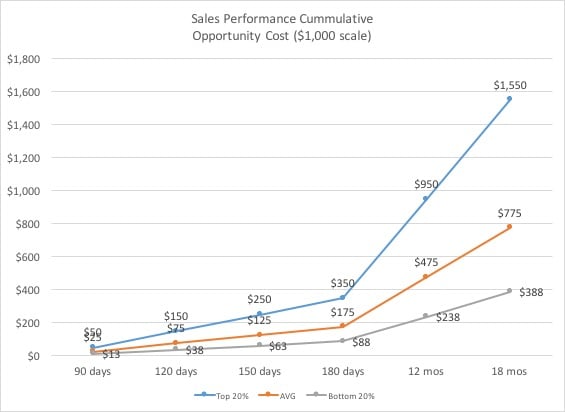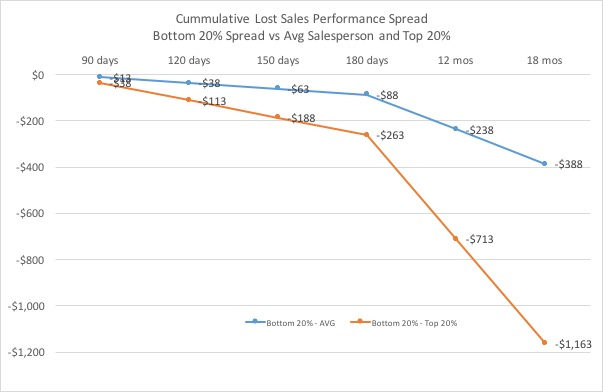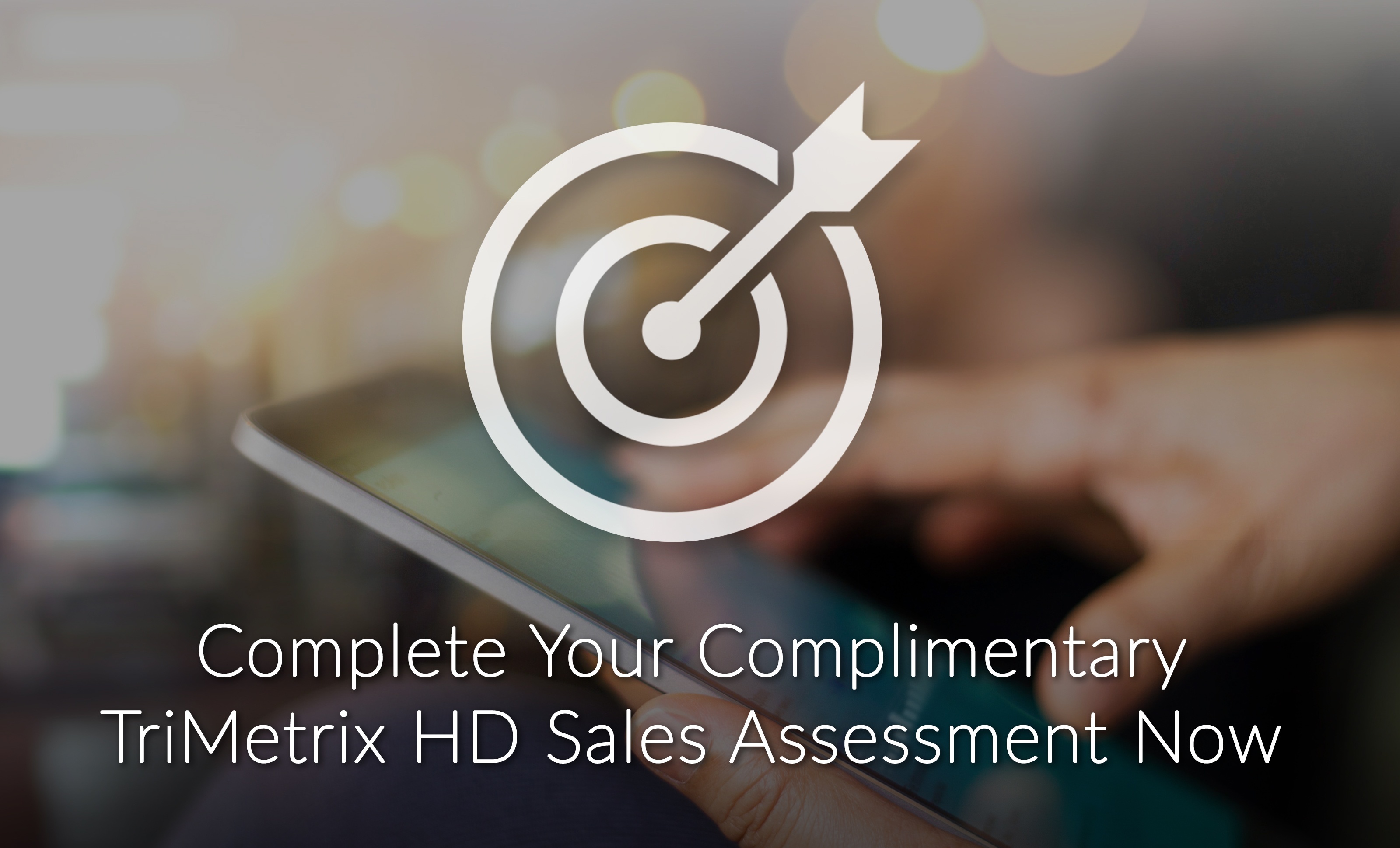Hiring costs are just the tip of the iceberg.
Ask most people about what a bad sales hire costs and they immediately fixate on the hiring costs including recruitment, training, and onboarding compensation.
Most CEOs and those in sales management will quickly spout hiring costs and stop there.
While certainly expensive, for the most part hiring costs are fixed. They are "one and done".
Those who are data-driven understand that a bad sales hire represents far, far more than one-time sunk hiring costs.
A bad sales hire represents a permanently-damaged future revenue stream.
The Real Miss - Bad sales hires become a horrific long-term revenue suck.
Ask most sales managers and CEOs just how much value a low-performing salesperson destroys in their company and they will all say, "It's a lot."
It is as if they just came to realize that bad sales hires actually miss sales.
Unless you dollarize the cost of your sales hiring problem, you will do little to change how you hire salespeople.
How to calculate your total costs of a bad sales hire.
To calculate your total costs of a bad sales hire you must know the following:
- The cost to recruit, onboard, and train a salesperson.
- The average sales of your Top 20%, Average, and Bottom 20% salespeople.
The cost of hiring a salesperson.
It is generally accepted that the cost of recruiting, onboarding, and training a salesperson is typically one year's compensation.
The cost of missed sales by low-performing salespeople.
I ran the following simple illustration. You may download our cost of missed sales spreadsheet calculator to plug in your own assumptions.
For this illustration, I am using the following monthly cummulative sales figures for the average Top 20% salesperson, the average salesperson, and the Bottom 20% salesperson. Use the spreadsheet to input your own sales performance data.
To clarify: We often find that Top 20% sales performers out-produce average salespeople by a factor of 10-20 times. In this illustration, we use a more conservative approach. The following sales figures are cummulative.
|
Sales Performance |
90 Days | 120 Days | 150 Days | 180 Days | 12 Mos | 18 Mos |
| Top 20% | $50k | $150k | $250k | $350k | $950k | $1.55m |
| Average | $25k | $75k | $125k | $175k | $475k | $755k |
| Bottom 20% | $13k | $38k | $63k | $88k | $238k | $388k |
The above table presented is illustrated in the following chart.

A Bottom 20% salesperson (18 mos = $388k) is outproduced by the average salesperson (18 mos = $775k) and Top 20% salesperson (18 mos = $1.55m).
The presented data absolutely screams, "Do something!"
The following chart applies the very same assumptions used in the previous table and chart. In the following chart, we illustrate the sales performance spreads between:
- Bottom 20% relative to the Average salesperson.
- Bottom 20% relative to the Top 20% salesperson.
Shield your eyes. Even using conservative numbers provides an ugly missed sales performance spread.

What this illustrative example suggests.
- Replace a Bottom 20% salesperson with a Top 20% and this company would realize a $1.163m improvement in sales over 18 months.
- Replace a Bottom 20% salesperson with an average salesperson and this company would realize a sales improvement of $388k over 18 months.
Consider:
What is the sales performance spread between your average Top 20 and average Bottom 20 salesperson? How about the spread between your Average salesperson and your average Bottom 20?
Get yourself a puke bucket.
If you do your own math, you are going to get sick to your stomach and as disgusting as it sounds, that is a good thing. Enter the data for yourself. Identify the sales performance of your typical top 20th percentile salesperson, the average salesperson, and the bottom 20th percentile salesperson. Enter the data points into the provided spreadsheet.
Make a real change.
Complete the provided spreadsheet calculator and apply your net margins. Chances are by improving your sales hiring outcomes by just one or two salespeople a year will pay for additional resources such as a solid sales personality test and perhaps even an additional internal or outside recruiter.
The key to dramatically improving your sales hiring is to:
- Benchmark the sales role.
- Use a multi-science sales personality test as part of your sales hiring scorecard to ensure you are objectively hiring only the best qualified salespeople.





